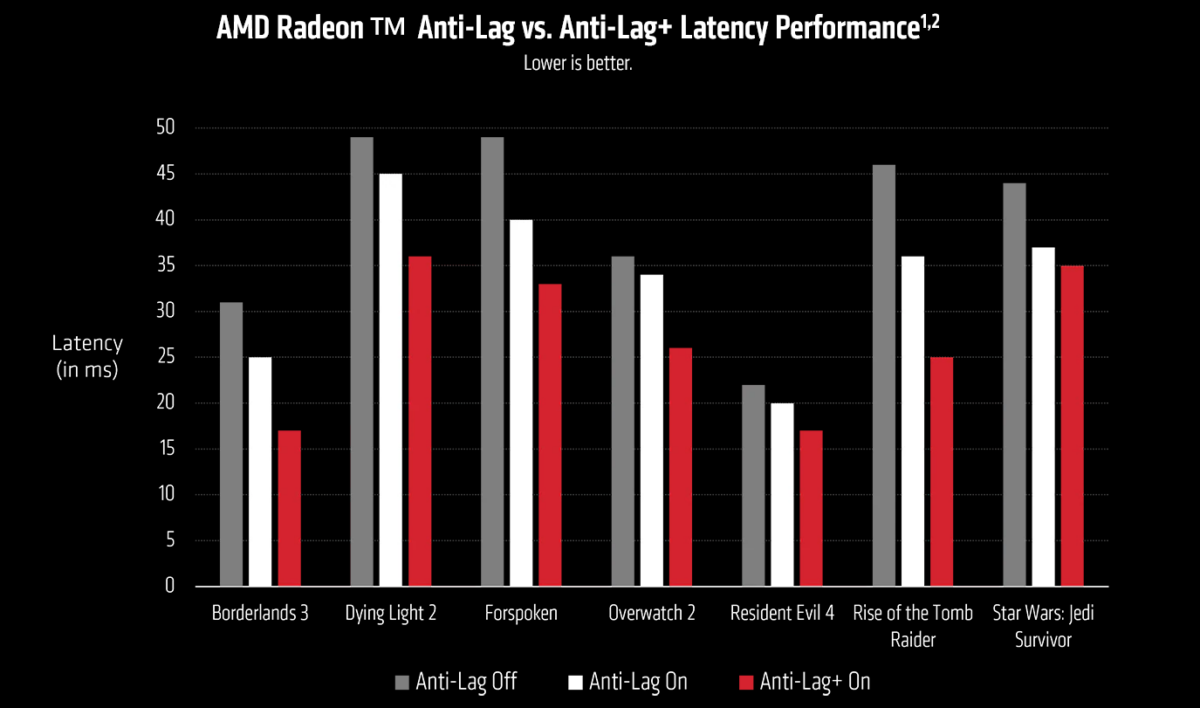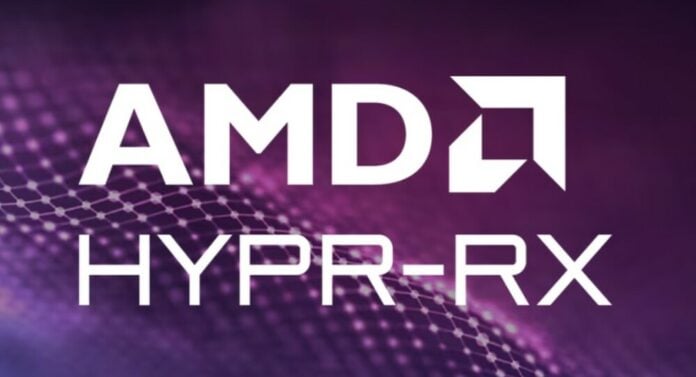AMD has announced Software Adrenalin 23.9.1 WHQL drivers bringing Radeon Anti-Lag+, Radeon Boost, and Hypr-RX, offering alternatives to Nvidia’s feature set.
In conjunction with the launch of the mid-range Radeon RX 7800 XT and RX 7700 XT graphics cards, AMD has also released a new driver update focusing on much-awaited technologies such as Anti-Lag+, Radeon Boost, and Fluid Motion Frames.
Anti-Lag+
Anti-Lag and Anti-Lag+ are latency-reduction technologies like Nvidia’s Reflex, which are much needed in esports games where every millisecond counts. Anti-Lag aims to deliver fast click-to-response times by controlling the pace of CPU work, making sure it doesn’t get too far ahead of the GPU, and thus reducing the amount of CPU work queued up. Anti-Lag+ further improves on that by applying frame alignment within the game code itself, allowing for better frame syncing and leading to even lower latency.
Initially, Anti-Lag+ will support 12 games; Apex Legends, Borderlands 3, Overwatch 2, Dying Light 2, Shadow of the Tomb Raider, Rise of the Tomb Raider, Ghostwire: Tokyo, Fortnite, Last of Us: Part 1, Star Wars Jedi: Survivor, Resident Evil 3, and Resident Evil 4, with more coming later.
Note that Anti-Lag+ is only available on Radeon RX 7000 Series graphics cards and Ryzen processors with RDNA 3 architecture-based iGPUs. This means that Hypr-RX, which requires Anti-Lag+, is also only accessible on latest AMD hardware.

Radeon Boost
Radeon Boost is a sort of dynamic resolution scaling which is said to bring up to 38 per cent performance uplift. But unlike your usual dynamic resolution sliders, Radeon Boost works by only reducing resolution based on the in-game camera’s movement speed. The idea is that in fast-action scenes, players should be less susceptible to drops in image detail.
Hypr-RX
Hypr-RX is a late-to-market one-click solution to activate Radeon Anti-Lag+, Radeon Boost, and Radeon Super Resolution (RSR) to achieve improved performance and latency. Hypr-RX will also add / activate Fluid Motion Frames when that technology becomes available in Q1 2024.
Fluid Motion Frames
Fluid Motion Frames (FMF) is AMD’s answer to DLSS 3 Frame Generation. FMF interpolates frames and creates new ones to fit between every two frames, in a way doubling the frame rate. Unlike Nvidia’s solution, AMD’s take is driver-based, meaning all DirectX 11 and DirectX 12 games should, in theory, take advantage of it. The best part, though designed for Radeon RX 7000, it may be ported over to RX 6000 and even older GPUs.
Obviously, if you follow hardware and gaming news, you may know that this is not a true doubling in frame rate, but rather a smoothing feature, i.e. latency isn’t reduced. Furthermore, these generated frames tend to have some imperfections. But hey, if it’s free, we take it.
Otherwise, apart from new GPU support, no major game optimisations or bug fixes are to speak of this time, with only a fix to an error message when selecting Dolby Atmos.
We also remind you that if you are eyeing one of the newly released – or some old – CPUs and GPUs, AMD offers you a copy of Starfield. The full list of eligible hardware can be found on our Software Adrenalin 23.8.2 driver coverage.
Software Adrenalin 23.9.1 WHQL can be downloaded from AMD’s website here.
The full list of changes goes as follows:
New Feature Highlights
- AMD Radeon Anti-Lag+ – Takes responsive gaming to the next level by introducing per-game profiling to intelligently pace frames further reducing input lag on RDNA 3 based Radeon GPUs.
- AMD Radeon Boost – Now supports AMD Radeon Anti-Lag+ and improves image quality through awareness of mouse sensitivity, reducing the image quality impact of dynamic resolution switching during motion—typically seen with high-DPI mice.
- AMD Software: Adrenalin Edition 23.9.1 introduces AMD Radeon Boost support for Resident Evil 4 Remake and Ghostwire: Tokyo, which delivers extra performance and increased responsiveness with little perceived impact to quality.
- AMD HYPR-RX – Introducing a new driver experience that allows users to optimize their games using AMD Software features for their RDNA 3 based Radeon GPUs, achieving increased performance and lower latency with ease.
- AMD Software: Adrenalin Edition 23.9.1 introduces the ability to intelligently combine AMD Radeon Anti-Lag+, Boost, and Radeon Super Resolution to achieve improved performance and latency reduction than these features can achieve on their own.
What’s Next?
- AMD Radeon Anti-Lag+ – Initially supporting 12 games, new game support for AMD Radeon Anti-Lag+ will be released through AMD Software: Adrenalin Edition updates in the coming months.
- AMD HYPR-RX – The HYPR-RX experience will continue to grow, including support for AMD Fluid Motion Frames to boost FPS using frame generation for DirectX 11 and 12 games in Q1 2024.
Fixed Issues
- Error message may be observed when selecting Spatial sound format of “Dolby Atmos for home theatre”.
Known Issues
- Performance Metrics Overlay may report N/A for FPS on various games.
- Audio may intermittently become out of sync with video when recording from AMD Software: Adrenalin Edition with AV1 codec.
- Display may not reach correct brightness with certain games on select SAMSUNG FreeSync Premium Pro monitors or TVs with local dimming setting enabled.
- Application crash may be observed while playing Baldur’s Gate 3 with Vulkan API set on some AMD Graphics Products, such as the Radeon RX 7900 XTX.
- Application crash or driver timeout may be observed while playing SMITE on some AMD Graphics Products, such as the Radeon RX 7900 XT.

